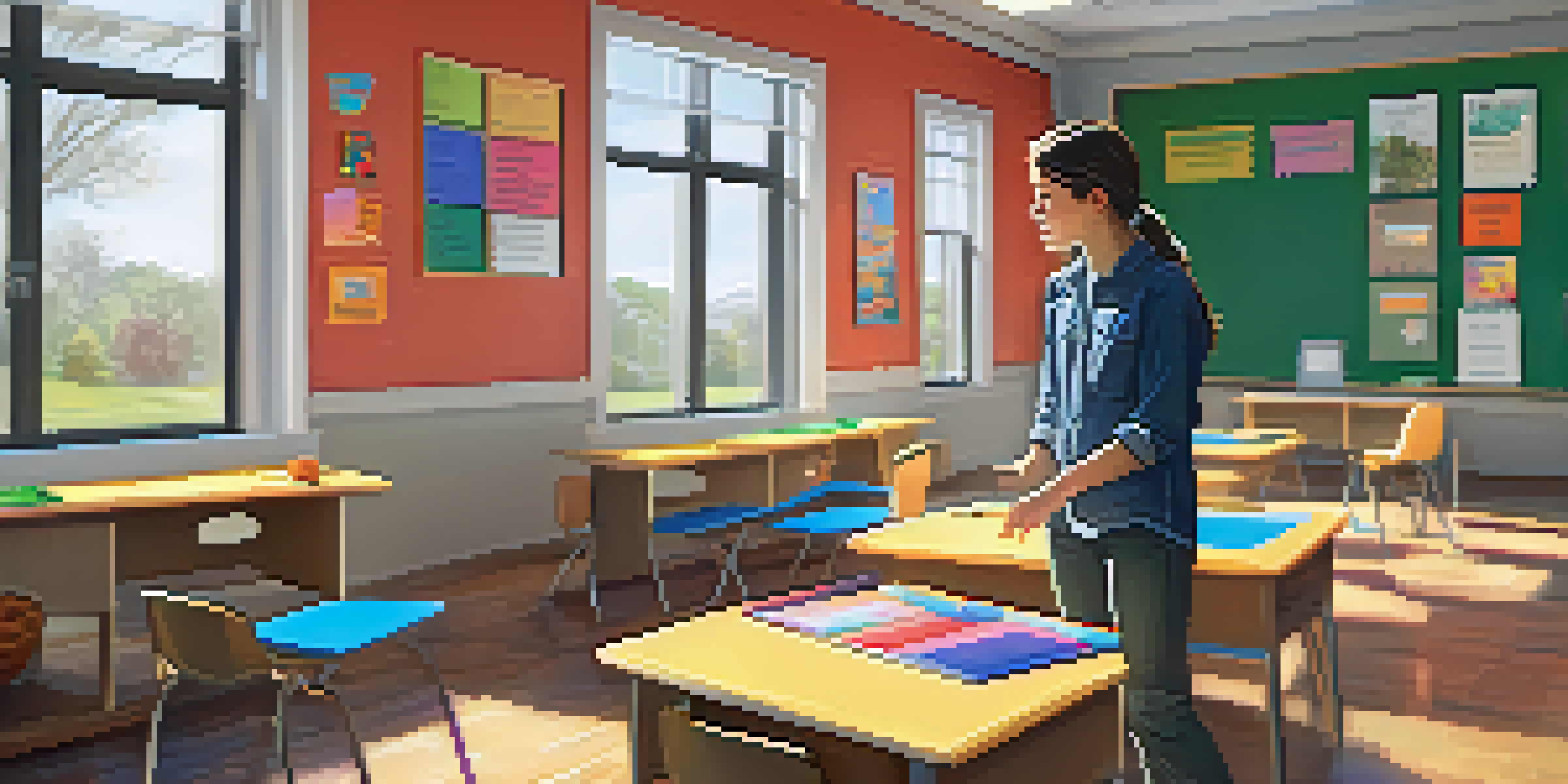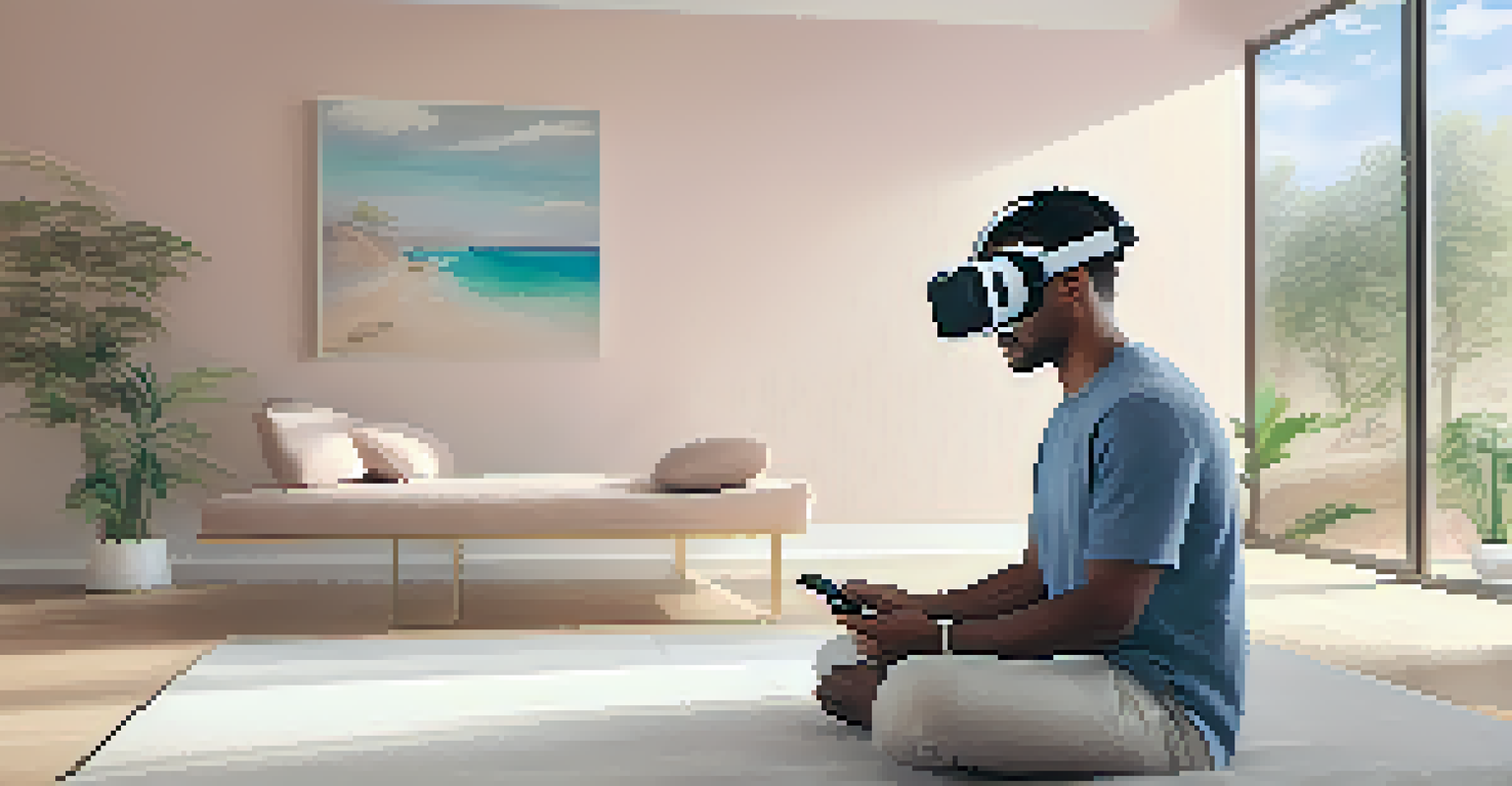The Role of Virtual Reality in Accessibility Solutions

Understanding Virtual Reality and Accessibility
Virtual reality (VR) immerses users in a simulated environment, allowing for unique experiences that can be tailored to various needs. Accessibility, in this context, refers to the design of products, devices, services, or environments for people with disabilities. When combined, VR and accessibility can create transformative experiences that empower users to engage with technology and their surroundings in ways that were previously unimaginable.
Virtual reality is not just a tool for entertainment; it has the potential to transform lives by making experiences accessible for everyone.
Imagine a person with limited mobility who can explore a virtual museum or attend a concert from the comfort of their home. This kind of immersive experience not only broadens their horizons but also fosters social inclusion. By understanding both VR and accessibility, we can appreciate how these technologies can work together to enhance the quality of life for many individuals.
As we delve deeper into the role of VR in accessibility solutions, it’s essential to recognize the importance of user-centered design. This approach ensures that the technology is not just innovative but also practical and beneficial for those who need it most.
Enhancing Learning Opportunities Through VR
One of the most exciting applications of VR in accessibility is its potential to revolutionize education. Traditional learning environments can sometimes be challenging for students with disabilities, but VR can provide tailored experiences that cater to individual needs. For instance, a visually impaired student can navigate a virtual classroom using audio cues, making learning more inclusive.

Additionally, VR can simulate real-world scenarios, offering students hands-on experience without the risks associated with physical environments. Imagine a student with autism practicing social interactions in a controlled, virtual setting, where they can refine their skills before engaging in real-life situations. This type of learning can significantly boost confidence and competence.
VR Enhances Accessibility Experience
Combining virtual reality with accessibility creates transformative experiences that empower individuals with disabilities to engage with technology and their surroundings.
Moreover, educators can use VR to create engaging lesson plans that capture the attention of all students, regardless of their abilities. By breaking down barriers in education, VR fosters a more equitable learning landscape, allowing everyone to thrive.
Virtual Reality's Role in Therapy and Rehabilitation
VR is making waves in the field of therapy and rehabilitation, providing innovative solutions for patients with various physical and mental challenges. For instance, individuals recovering from strokes can use VR to engage in repetitive therapeutic exercises that promote movement. By creating a motivating and interactive environment, patients are more likely to participate actively in their recovery.
The future of technology is not about humans versus machines, but about how we can use technology to enhance human experiences, making them accessible to all.
In addition to physical therapy, VR is also being used in mental health treatments. Exposure therapy, which helps individuals confront their fears in a safe environment, can be enhanced through VR. Imagine someone with a fear of heights using a VR simulation to gradually face their anxiety while still feeling secure.
The versatility of VR in therapeutic contexts highlights its potential to improve patient outcomes. By making therapy more engaging and accessible, practitioners can encourage individuals to commit to their treatment plans and see significant progress.
Promoting Social Interaction with Virtual Reality
Isolation can be a significant issue for individuals with disabilities, but VR has the power to bridge that gap. Virtual environments can host social gatherings, allowing users to connect with friends and family, regardless of their physical limitations. This helps foster a sense of community and belonging that is often hard to achieve in the real world.
Take, for example, virtual reality platforms that allow users to participate in group activities, such as gaming or attending events. These social spaces can be designed to accommodate various needs, ensuring that everyone can join in the fun. By creating inclusive digital communities, VR can combat loneliness and promote healthier social interactions.
VR Revolutionizes Education
Virtual reality can tailor educational experiences to meet individual needs, providing inclusive learning opportunities for students with disabilities.
Furthermore, VR can also facilitate communication for individuals who struggle with verbal interactions. Avatars can represent users in virtual spaces, allowing them to engage in conversations and activities at their own pace, which can be particularly beneficial for those with speech impairments.
Accessibility Features in Virtual Reality Platforms
As the demand for accessible VR experiences grows, developers are increasingly prioritizing inclusive design features. This includes adjustable settings for visual and audio elements, allowing users to customize their experience according to their needs. For instance, users with hearing impairments may benefit from visual cues or subtitles, while those with visual impairments might require audio descriptions.
Moreover, haptic feedback technology can enhance accessibility by providing tactile sensations that help users navigate virtual environments. By incorporating these features, developers ensure that their products are usable by a broader audience, ultimately making VR a more inclusive space.
The commitment to accessibility in VR development reflects a growing understanding of diverse user needs. By focusing on these features, developers can create immersive experiences that everyone can enjoy, paving the way for future innovations in the field.
Real-World Case Studies of VR in Accessibility
Several organizations and projects are leading the way in using VR to enhance accessibility. For example, the 'VR for Good' initiative focuses on creating immersive experiences that address social issues, including disability awareness. Through these projects, users can gain insights into the challenges faced by individuals with disabilities, fostering empathy and understanding.
Another notable example is the use of VR in training programs for healthcare professionals. By simulating various patient scenarios, trainees can learn how to interact with individuals with disabilities effectively. This hands-on approach can improve the quality of care provided and create a more inclusive healthcare environment.
Social Connections Through VR
VR fosters social interaction by allowing individuals with disabilities to connect and engage in virtual environments, combating feelings of isolation.
These real-world case studies illustrate the practical applications of VR in enhancing accessibility. By showcasing success stories, we can inspire further innovation and encourage more organizations to explore the potential of VR in their accessibility efforts.
Challenges and Future Directions for VR Accessibility
While the potential for VR in accessibility is immense, there are challenges that must be addressed. One significant issue is the cost of VR technology, which can be a barrier for individuals and organizations seeking to implement these solutions. As the technology continues to evolve, it is crucial to find ways to make it more affordable and accessible to all users.
Another challenge lies in ensuring that VR experiences are genuinely inclusive. Developers must prioritize user feedback and involve individuals with disabilities in the design process to create meaningful solutions. This collaboration can help identify potential pitfalls and ensure that the technology meets the diverse needs of its users.

Looking ahead, the future of VR in accessibility holds great promise. By addressing current challenges and fostering collaboration among stakeholders, we can create a more inclusive digital landscape that empowers everyone to participate fully in the virtual world.